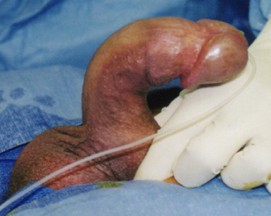Peyronie’s Disease: The What, Why And How To Treat It
What Is Peyronie’s Disease?
Peyronie’s disease is a connective tissue disorder that affects the penis. It occurs when scar tissue called plaque forms along the length of the penis, which while not visible, causes the penis to bend. This renders sexual intercourse difficult and often paid inducing.

Who Suffers From It?
The disease is mostly experienced by middle-aged men, but can be found in men of all ages. There’s a chance that the condition is genetically linked or inherited, as it often occurs within families. One study has suggested that 1% of all men experience peyronie’s disease to varying degrees.
What Are The Causes Of Peyronie’s Disease?
This is less clear cut – some researchers believe that the plaque that causes Peyronie’s disease often develops after a penis trauma, like being hit or bent, which causes internal bleeding within the penis. It’s also thought that the disease can be passed on from parents to children genetically.
Finally, there are a number of medications listing Peyronie’s disease as a potential side effect, although there’s no tangible evidence of a direct link here, and next to no chance of developing the disease by taking these drugs alone.
What Are The Symptoms?
Symptoms can both develop over time or appear overnight. Often no issue can be  recognised when the penis is in a placid state, but when it becomes erect the hardened plaque becomes inflexible, causing pain and a bend in the penis. This can make sexual intercourse painful and even impossible.
recognised when the penis is in a placid state, but when it becomes erect the hardened plaque becomes inflexible, causing pain and a bend in the penis. This can make sexual intercourse painful and even impossible.
While sufferers often see the pain reduce during the duration of their ailment, the bend in the penis while erect remains a problem.
Less severe forms of Peyronie’s disease can clear up spontaneously without any permanent damage or pain – this tends to happen with 5%-9% of sufferers. Occasionally people experiencing Peyronie’s disease develop scar tissue elsewhere on the body, like the hands or feet.
Treating Peyronie’s Disease
As the disease can resolve itself spontaneously, doctors often suggest waiting at least a year before attempting medical treatment.
Serious cases of Peyronie’s disease can sometimes require surgery – this works by either removing the plaque and replacing it with tissue or removing or altering the tissue from the side of the penis opposite the plaque to counter the bending effect.
Sadly, neither of these options guarantees penis function. Replacing the plaque with penis tissue can lead to loss of erectile function, whereas the second option can leave the erect penis shorter than usual. What’s more, complications are frequent, so surgery is often seen as a last resort.
A prosthesis implant is the third surgical option, and is performed on men who suffer extreme erectile dysfunction as a result of the disease.
Other less invasive treatment options include vitamin E, which can ease the symptoms of Peyronie’s disease, and radiation therapy. Speaking to your doctor should always be the first port of call, however, when seeking treatments for  Peyronie’s disease.
Peyronie’s disease.
Finally, traction devices are growing increasingly popular in treating Peyronie’s disease – this safe, proven and non-surgical option uses a penile extender to gradually stretch the penis, with the tension involved potentially reducing penis curvature by breaking down the hardened plaques and triggering the body to produce new cells and tissue to ease the tension.
Tension should be applied gradually, and traction devices should ideally used for around 3-6 months for maximum results…

